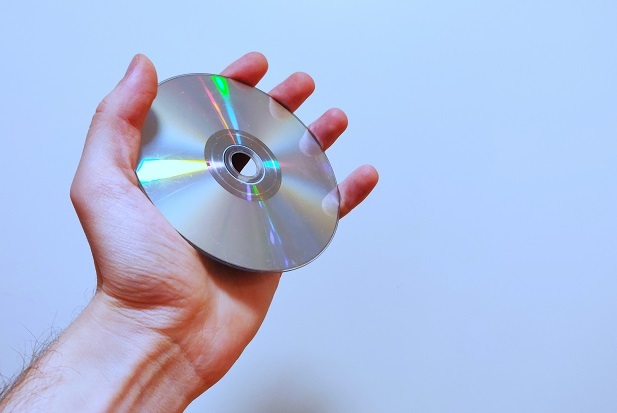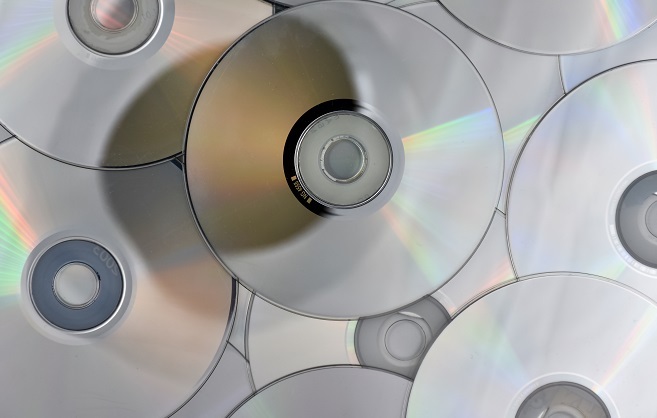
 Data Structure
Data Structure Networking
Networking RDBMS
RDBMS Operating System
Operating System Java
Java MS Excel
MS Excel iOS
iOS HTML
HTML CSS
CSS Android
Android Python
Python C Programming
C Programming C++
C++ C#
C# MongoDB
MongoDB MySQL
MySQL Javascript
Javascript PHP
PHP
- Selected Reading
- UPSC IAS Exams Notes
- Developer's Best Practices
- Questions and Answers
- Effective Resume Writing
- HR Interview Questions
- Computer Glossary
- Who is Who
What is the full form of CD-RW?
Introduction
Compact Disc-Rewritable (CD-RW) is an optical disc storage technology that allows users to write, erase, and rewrite data on a CD using a CD-RW drive. A CD-RW disc can be written to multiple times, and the data can be erased and rewritten many times, unlike a CD-R, which can only be written to once. CD-RW drives use a laser to write and erase data on the disc, and they are compatible with standard CD players and CD-ROM drives.

CD-RW technology was developed in the late 1990s as an improvement over CD-R technology, which was limited to one-time recording. Today, CD-RW drives and discs are less commonly used than other storage options such as USB flash drives and cloud storage, but they remain a viable option for certain applications.
History
The development of CD-RW technology began in the late 1980s, shortly after the introduction of the CD-ROM. At the time, CDs were read-only and could not be written or rewritten. However, in 1990, Philips and Sony jointly developed the CD-R (Compact Disc-Recordable) technology, which allowed users to record data onto a CD once.
The next step was the development of rewritable CD technology, which allowed users to erase and rewrite data on a CD. The first CD-RW drive was developed by Philips and Sony in 1995, using phase-change technology that allowed the laser to heat and cool the disc's recording layer, changing its physical state to record or erase data. However, these early CD-RW drives were slow and had limited compatibility with CD players and CD-ROM drives.
In 1997, a new standard called High-Speed CD-RW was introduced, which increased the writing speed and compatibility of CD-RW drives. Over the years, CD-RW technology continued to evolve, with faster speeds, improved compatibility, and larger storage capacity.
Today, CD-RW technology has largely been surpassed by other storage options such as USB flash drives and cloud storage, but it remains a viable option for certain applications that require a rewritable optical disc.
Characteristics
Here are some characteristics of Compact Disc-Rewritable (CD-RW) technology
Rewritable CD-RW discs can be written to multiple times, and the data can be erased and rewritten many times, unlike CD-R discs, which can only be written to once.
Compatibility CD-RW drives are backward-compatible with CD-ROM drives and standard CD players, which means that they can be used in a variety of devices.
Capacity CD-RW discs have a storage capacity of up to 700 MB, which is lower than other storage options such as DVDs and USB flash drives.
Speed CD-RW drives are slower than other storage options, with writing speeds ranging from 4x to 24x.
Durability CD-RW discs are less durable than other storage options, and they can be easily scratched or damaged if not handled properly.
Obsolescence CD-RW technology has largely been surpassed by other storage options such as USB flash drives and cloud storage, and it is becoming less common in modern computing.
Working
The working of a Compact Disc-Rewritable (CD-RW) drive involves a laser that heats and cools the disc's recording layer to record or erase data. Here are the steps involved in the working of a CD-RW drive
Spinning the disc The CD-RW drive spins the disc at high speed to read or write data.
Focusing the laser The CD-RW drive focuses a laser beam onto the disc's recording layer, which is a thin layer of a phase-change material such as silver, copper, or indium.
Heating the recording layer The laser heats the recording layer to a temperature that changes its physical state, making it more reflective or less reflective.
Writing data The CD-RW drive uses the heated recording layer to write data onto the disc. To write data, the laser changes the physical state of the recording layer, creating marks that represent the data.
Cooling the recording layer Once the data is written, the laser cools the recording layer, which locks in the data.
Erasing data To erase data, the CD-RW drive heats the recording layer to a different temperature that changes its physical state again, effectively erasing the marks representing the data.
Rewriting data To rewrite data, the CD-RW drive erases the data first and then writes new data onto the same area of the disc.
Advantages and disadvantages
Compact Disc-Rewritable (CD-RW) is a type of optical storage medium that allows users to write, erase, and rewrite data onto a disc multiple times. Here are some advantages and disadvantages of CD-RW
Advantages
Reusability One of the significant advantages of CD-RW is its reusability. Users can write data onto the disc, erase it, and then rewrite new data onto the same disc.

Compatibility CD-RWs are compatible with most CD and DVD drives. This means that users can use the same CD-RW disc in different devices, such as CD players, DVD players, and computers.
Data Protection CD-RW discs offer better data protection compared to other rewritable media. The discs are more resistant to scratches, and the data is less likely to become corrupted.
Storage Capacity CD-RW discs have a high storage capacity, which allows users to store large amounts of data on a single disc.
Disadvantages
Limited Lifespan CD-RW discs have a limited lifespan. After a certain number of rewrites, the disc's quality deteriorates, making it unusable.
Slower Write Speed CD-RW discs have a slower write speed compared to other types of rewritable media. This means that it takes longer to write data onto the disc.
Compatibility Issues Some CD and DVD drives may not be compatible with CD- RW discs. This can cause problems when trying to read or write data onto the disc.
Cost CD-RW discs are more expensive compared to other types of rewritable media. This can make them less attractive to users who need to store large amounts of data.
Conclusions
In conclusion, CD-RW discs have several advantages and disadvantages. Some of the advantages include reusability, compatibility with most CD and DVD drives, better data protection, and high storage capacity. On the other hand, some of the disadvantages include a limited lifespan, slower write speed, compatibility issues with some CD and DVD drives, and higher cost compared to other types of rewritable media.
FAQs
Q1. What is the difference between CD-R and CD-RW?
CD-R (Compact Disc-Recordable) discs can only be written on once and cannot be erased or rewritten. CD-RW (Compact Disc-Rewritable) discs, on the other hand, can be written, erased, and rewritten multiple times.
Q2. Can CD-RW discs be read by all CD and DVD drives?
Most CD and DVD drives are compatible with CD-RW discs, but some older or specialized drives may not be able to read or write to CD-RW discs.
Q3. Can CD-RW discs be used for music or video playback?
Yes, CD-RW discs can be used for music or video playback as long as they have been formatted correctly and the playback device is compatible with the disc format.

